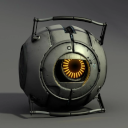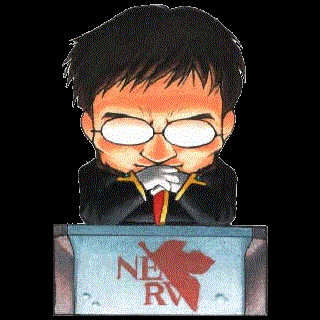typedef struct { bool a: 1; bool b: 1; bool c: 1; bool d: 1; bool e: 1; bool f: 1; bool g: 1; bool h: 1; } __attribute__((__packed__)) not_if_you_have_enough_booleans_t;You beat me to it!
Or just
std::bitset<8>for C++. Bit fields are neat though, it can store weird stuff like a 3 bit integer, packed next to booleansThat’s only for C++, as far as I can tell that struct is valid C
This was gonna be my response to OP so I’ll offer an alternative approach instead:
typedef enum flags_e : unsigned char { F_1 = (1 << 0), F_2 = (1 << 1), F_3 = (1 << 2), F_4 = (1 << 3), F_5 = (1 << 4), F_6 = (1 << 5), F_7 = (1 << 6), F_8 = (1 << 7), } Flags; int main(void) { Flags f = F_1 | F_3 | F_5; if (f & F_1 && f & F_3) { // do F_1 and F_3 stuff } }Why not
if (f & (F_1 | F_3)) {? I use this all the time in embedded code.edit: never mind; you’re checking for both flags. I’d probably use
(f & (F_1 | F_3)) == (F_1 | F_3)but that’s not much different than what you wrote.
Depending on the language
And compiler. And hardware architecture. And optimization flags.
As usual, it’s some developer that knows little enough to think the walls they see around enclose the entire world.
Fucking lol at the downvoters haha that second sentence must have rubbed them the wrong way for being too accurate.
deleted by creator
I don’t think so. Apart from dynamically typed languages which need to store the type with the value, it’s always 1 byte, and that doesn’t depend on architecture (excluding ancient or exotic architectures) or optimisation flags.
Which language/architecture/flags would not store a bool in 1 byte?
things that store it as word size for alignment purposes (most common afaik), things that pack multiple books into one byte (normally only things like bool sequences/structs), etc
things that store it as word size for alignment purposes
Nope. bools only need to be naturally aligned, so 1 byte.
If you do
struct SomeBools { bool a; bool b; bool c; bool d; };its 4 bytes.
sure, but if you have a single bool in a stack frame it’s probably going to be more than a byte. on the heap definitely more than a byte
but if you have a single bool in a stack frame it’s probably going to be more than a byte.
Nope. - if you can’t read RISC-V assembly, look at these lines
sb a5,-17(s0) ... sb a5,-18(s0) ... sb a5,-19(s0) ...That is it storing the bools in single bytes. Also I only used RISC-V because I’m way more familiar with it than x86, but it will do the same thing.
on the heap definitely more than a byte
Nope, you can happily
malloc(1)and store a bool in it, ormalloc(4)and store 4 bools in it. A bool is 1 byte. Consider this a TIL moment.c++ guarantees that calls to malloc are aligned https://en.cppreference.com/w/cpp/memory/c/malloc .
you can call
malloc(1)ofc, but callingmalloc_usable_size(malloc(1))is giving me 24, so it at least allocated 24 bytes for my 1, plus any tracking overheadyeah, as I said, in a stack frame. not surprised a compiler packed them into single bytes in the same frame (but I wouldn’t be that surprised the other way either), but the system v abi guarantees at least 4 byte alignment of a stack frame on entering a fn, so if you stored a single bool it’ll get 3+ extra bytes added on the next fn call.
computers align things. you normally don’t have to think about it. Consider this a TIL moment.
Apart from dynamically typed languages which need to store the type with the value
You know that depending on what your code does, the same C that people are talking upthread doesn’t even need to allocate memory to store a variable, right?
How does that work?
I think he’s talking about if a variable only exists in registers. In which case it is the size of a register. But that’s true of everything that gets put in registers. You wouldn’t say
uint16_tis word-sized because at some point it gets put into a word-sized register. That’s dumb.
I set all 8 bits to 1 because I want it to be really true.
01111111 = true
11111111 = negative true = false
00001111 = maybe
10101010 = I don’t know
100001111 = maybe not
0011 1111 = could you repeat the question
00000001 00000000 00001111 10101010
Schrödingers Boolean
Is this quantum computing? 😜
What if it’s an unsigned boolean?
Cthulhu shows up.

Common misconception… Unsigned booleans (ubool) are always 16-bits.
Super true.
Could also store our bools as floats.
00111111100000000000000000000000is true and10111111100000000000000000000000is negative true.Has the fun twist that true & false is true and true | false is false .
Why do alternative facts always gotta show up uninvited to the party? 🥳
So all this time true was actually false and false was actually true ?
Depends on if you are on a big endian or little endian architecture.
Come on man, I’m not gonna talk about my endian publicly
negative true = negative non-zero = non-zero = true.
TIL, 255 is the new 1.
Aka -1 >> 1 : TRUE
But only if you really mean it. If not, it’s a syntax error and the compiler will know.
I was programming in assembly for ARM (some cortex chip) and I kid you not the C program we were integrating with required 255, with just 1 it read it as false
You jest, but on some older computers, all ones was the official truth value. Other values may also have been true in certain contexts, but that was the guaranteed one.
string boolEnable = "True";Violence
Maybe json is named after Jason Voorhees
Then you need to ask yourself: Performance or memory efficiency? Is it worth the extra cycles and instructions to put 8 bools in one byte and & 0x bitmask the relevant one?
Sounds like a compiler problem to me. :p
A lot of times using less memory is actually better for performance because the main bottleneck is memory bandwidth or latency.
Yep, and anding with a bit ask is incredibly fast to process, so it’s not a big issue for performance.
It’s not just less memory though - it might also introduce spurious data dependencies, e.g. to store a bit you now need to also read the old value of the byte that it’s in.
It might also introduce spurious data dependencies
Those need to be in the in smallest cache or a register anyway. If they are in registers, a modern, instruction reordering CPU will deal with that fine.
to store a bit you now need to also read the old value of the byte that it’s in.
Many architectures read the cache line on write-miss.
The only cases I can see, where byte sized bools seems better, are either using so few that all fit in one chache line anyways (in which case the performance will be great either way) or if you are repeatedly accessing a bitvector from multiple threads, in which case you should make sure that’s actually what you want to be doing.
Could definitely be worse for latency in particular cases, but if we imagine a write heavy workload it still might win. Writing a byte/word basically has to do the same thing: read, modify write of cache lines, it just doesn’t confuse the dependency tracking quite as much. So rather than stalling on a read, I think that would end up stalling on store buffers. Writing to bits usually means less memory, and thus less memory to read in that read-modify-write part, so it might still be faster.
And you may ask yourself: where is my beautiful house? Where is my beautiful wife?
- Soon to be
- That’s me
Talking heads - once in a lifetime
Letting the days go by, let the water hold me down
Wait till you find out about alignment and padding
Tell me the truth, i can handle it
Back in the day when it mattered, we did it like
#define BV00 (1 << 0) #define BV01 (1 << 1) #define BV02 (1 << 2) #define BV03 (1 << 3) ...etc #define IS_SET(flag, bit) ((flag) & (bit)) #define SET_BIT(var, bit) ((var) |= (bit)) #define REMOVE_BIT(var, bit) ((var) &= ~(bit)) #define TOGGLE_BIT(var, bit) ((var) ^= (bit)) ....then... #define MY_FIRST_BOOLEAN BV00 SET_BIT(myFlags, MY_FIRST_BOOLEAN)With embedded stuff its still done like that. And if you go from the arduino functionss to writing the registers directly its a hell of a lot faster.
Okay. Gen z programmer here. Can you explain this black magic? I see it all the time in kernel code but I have no idea what it means.
It’s called bitshifting and is used to select which bits you want to modify so you can toggle them individually.
1 << 0 is the flag for the first bit
1 << 1 for the second
1 << 2 for the third and so onI think that’s correct. It’s been years since I’ve used this technique tbh 😅
The code is a set of preprocessor macros to stuff loads of booleans into one int (or similar), in this case named ‘myFlags’. The preprocessor is a simple (some argue too simple) step at the start of compilation that modifies the source code on its way to the real compiler by substituting #defines, prepending #include’d files, etc.
If myFlags is equal to, e.g. 67, that’s 01000011, meaning that BV00, BV01, and BV07 are all TRUE and the others are FALSE.
The first part is just for convenience and readability. BV00 represents the 0th bit, BV01 is the first etc. (1 << 3) means 00000001, bit shifted left three times so it becomes 00001000 (aka 8).
The middle chunk defines macros to make bit operations more human-readable.
SET_BIT(myFlags, MY_FIRST_BOOLEAN)gets turned into((myFlags) |= ((1 << 0))), which could be simplified asmyFlags = myFlags | 00000001. (Ignore the flood of parentheses, they’re there for safety due to the loaded shotgun nature of the preprocessor.)Which part?
Edit - oops, responded to wrong comment…
In the industrial automation world and most of the IT industry, data is aligned to the nearest word. Depending on architecture, that’s usually either 16, 32, or 64 bits. And that’s the space a single Boolean takes.
That’s why I primarily use booleans in return parameters, beyond that I’ll try to use bitfields. My game engine’s tilemap format uses a 32 bit struct, with 16 bit selecting the tile, 12 bit selecting the palette, and 4 bit used for various bitflags (horizontal and vertical mirroring, X-Y axis invert, and priority bit).
Bit fields are a necessity in low level networking too.
They’re incredibly useful, I wish more people made use of them.
I remember I interned at a startup programming microcontrollers once and created a few bitfields to deal with something. Then the lead engineer went ahead and changed them to masked ints. Because. The most aggravating thing is that an int size isn’t consistent across platforms, so if they were ever to change platforms to a different word length, they’d be fucked as their code was full of platform specific shenanigans like that.
/rant
Good rant.
Yeah. I once had to do stuff to code that had bit-fields like that and after a while, realised (by means of StackOverflow) that that part is UB and I had to go with bitwise operations instead.
Undefined Behavior…?
Ok, I recalled wrong, it was unspecified
I always use stdint.h so that my types are compatible across any mcu. And it makes the data type easily known instead of guessing an i t size
Or you could just use Rust
The 8-bit Intel 8051 family provides a dedicated bit-addressable memory space (addresses 20h-2Fh in internal RAM), giving 128 directly addressable bits. Used them for years. I’d imagine many microcontrollers have bit-width variables.
bit myFlag = 0;Or even return from a function:
bit isValidInput(unsigned char input) { // Returns true (1) if input is valid, false (0) otherwise return (input >= '0' && input <= '9'); }Nothing like that in ARM. Even microcontrollers have enough RAM that nobody cares, I guess.
ARM has bit-banding specifically for this. I think it’s limited to M-profile CPUs (e.g. v7-M) but I’ve definitely used this before. It basically creates a 4-byte virtual address for every bit in a region. So the CPU itself can’t “address” a bit but it can access an address backed by only 1 bit of SRAM or registers (this is also useful to atomically access certain bits in registers without needing to use SW atomics).
Tell this to the LPC1114 I’m working with. Did you ever run a multilingual GUI from 2kbytes RAM on a 256x32 pixel display?
I did a multilingual display with an 8031 in 1995 on a 2x16 text LCD. I had 128 bytes of RAM and an EPROM. Did English, Spanish and German.
You kids have it so easy nowadays. 🤣
Last counting was 114 languages on the LPC1114. And yes, with normal LCDs I’ve done similar things on an 8051 before.
We could go the other way as well: TI’s C2000 microcontroller architecture has no way to access a single byte, let alone a bit. A Boolean is stored in 16-bits on that one.
And, you can have pointers to bits!
Weird how I usually learn more from the humor communities than the serious ones… 😎
std::vector<bool>fits eight booleans into one byte.std::vector<std::vector<bool>> is how I stored the representation of a play field for a Tetris game I made once.
auto v = std::vector<bool>(8); bool* vPtr = v.data; vPtr[2] = true; // KABOOM !!!I’ve spent days tracking this bug… That’s how I learned about bool specialisation of std::vector.
It’s far more often stored in a word, so 32-64 bytes, depending on the target architecture. At least in most languages.
No it isn’t. All statically typed languages I know of use a byte. Which languages store it in an entire 32 bits? That would be unnecessarily wasteful.
C, C++, C#, to name the main ones. And quite a lot of languages are compiled similarly to these.
To be clear, there’s a lot of caveats to the statement, and it depends on architecture as well, but at the end of the day, it’s rare for a
byteorboolto be mapped directly to a single byte in memory.Say, for example, you have this function…
public void Foo() { bool someFlag = false; int counter = 0; ... }The
someFlagandcountervariables are getting allocated on the stack, and (depending on architecture) that probably means each one is aligned to a 32-bit or 64-bit word boundary, since many CPUs require that for whole-word load and store instructions, or only support a stack pointer that increments in whole words. If the function were to have multiplebyteorboolvariables allocated, it might be able to pack them together, if the CPU supports single-byte load and store instructions, but the nextintvariable that follows might still need some padding space in front of it, so that it aligns on a word boundary.A very similar concept applies to most struct and object implementations. A single
byteorboolfield within a struct or object will likely result in a whole word being allocated, so that other variables and be word-aligned, or so that the whole object meets some optimal word-aligned size. But if you have multiple less-than-a-word fields, they can be packed together. C# does this, for sure, and has some mechanisms by which you can customize field packing.No, in C and C++ a bool is a byte.
since many CPUs require that for whole-word load and store instructions
All modern architectures (ARM, x86 RISC-V) support byte load/store instructions.
or only support a stack pointer that increments in whole words
IIRC the stack pointer is usually incremented in 16-byte units. That’s irrelevant though. If you store a single bool on the stack it would be 1 byte for the bool and 15 bytes of padding.
A single byte or bool field within a struct or object will likely result in a whole word being allocated, so that other variables and be word-aligned
Again, no. I think you’ve sort of heard about this subject but haven’t really understood it.
The requirement is that fields are naturally aligned (up to the machine word size). So a byte needs to be byte-aligned, 2-bytes needs to be 2-byte aligned, etc.
Padding may be inserted to achieve that but that is padding it doesn’t change the size of the actual bool, and it isn’t part of the bool.
But if you have multiple less-than-a-word fields, they can be packed together.
They will be, if it fits the alignment requirements. Create a struct with 8 bools. It will take up 8 bytes no matter what your packing setting is. They even give an example:
If you specify the default packing size, the size of the structure is 8 bytes. The two bytes occupy the first two bytes of memory, because bytes must align on one-byte boundaries.
They used
bytehere but it’s the same forboolbecause a bool is one byte.I’m really surprised how common this misconception is.
It’s not wasteful, it’s faster. You can’t read one byte, you can only read one word. Every decent compiler will turn booleans into words.
You can’t read one byte
lol what. You can absolutely read one byte: https://godbolt.org/z/TeTch8Yhd
On ARM it’s
ldrb(load register byte), and on RISC-V it’slb(load byte).Every decent compiler will turn booleans into words.
No compiler I know of does this. I think you might be getting confused because they’re loaded into registers which are machine-word sized. But in memory a
boolis always one byte.Sorry, but you’re very confused here.
You said you can’t read one byte. I showed that you can. Where’s the confusion?
Internally it will still read a whole word. Because the CPU cannot read less than a word. And if you read the ARM article you linked, it literally says so.
Thus any compiler worth their salt will align all byte variables to words for faster memory access. Unless you specifically disable such behaviour. So yeah, RTFM :)
Wrong again. It depends on the CPU. They can absolutely read a single byte and they will do if you’re reading from non-idempotent memory.
If you’re reading from idempotent memory they won’t read a byte or a word. They’ll likely read a whole cache line (usually 64 bytes).
And if you read the ARM article you linked, it literally says so.
Where?
Thus any compiler worth their salt will align all byte variables to words for faster memory access.
No they won’t because it isn’t faster. The CPU will read the whole cache line that contains the byte.
RTFM
Well, I would but no manual says that because it’s wrong!
if wasting a byte or seven matters to you, then then you need to be working in a lower level language.
It’s 7 bits…
Pay attention. 🤪
7 bytes! Look at Mr. Moneybags here!
Well when it comes to bytes, you could say I’m a bit of a millionaire myself.
Joke’s on you, I always use 64 bit wide unsigned integers to store a 1 and compare to check for value.
So does the cpu
boolean bloat
I first thought you wrote boolean float, not sure if that’s even worse.
boolean root beer float
deleted by creator





















